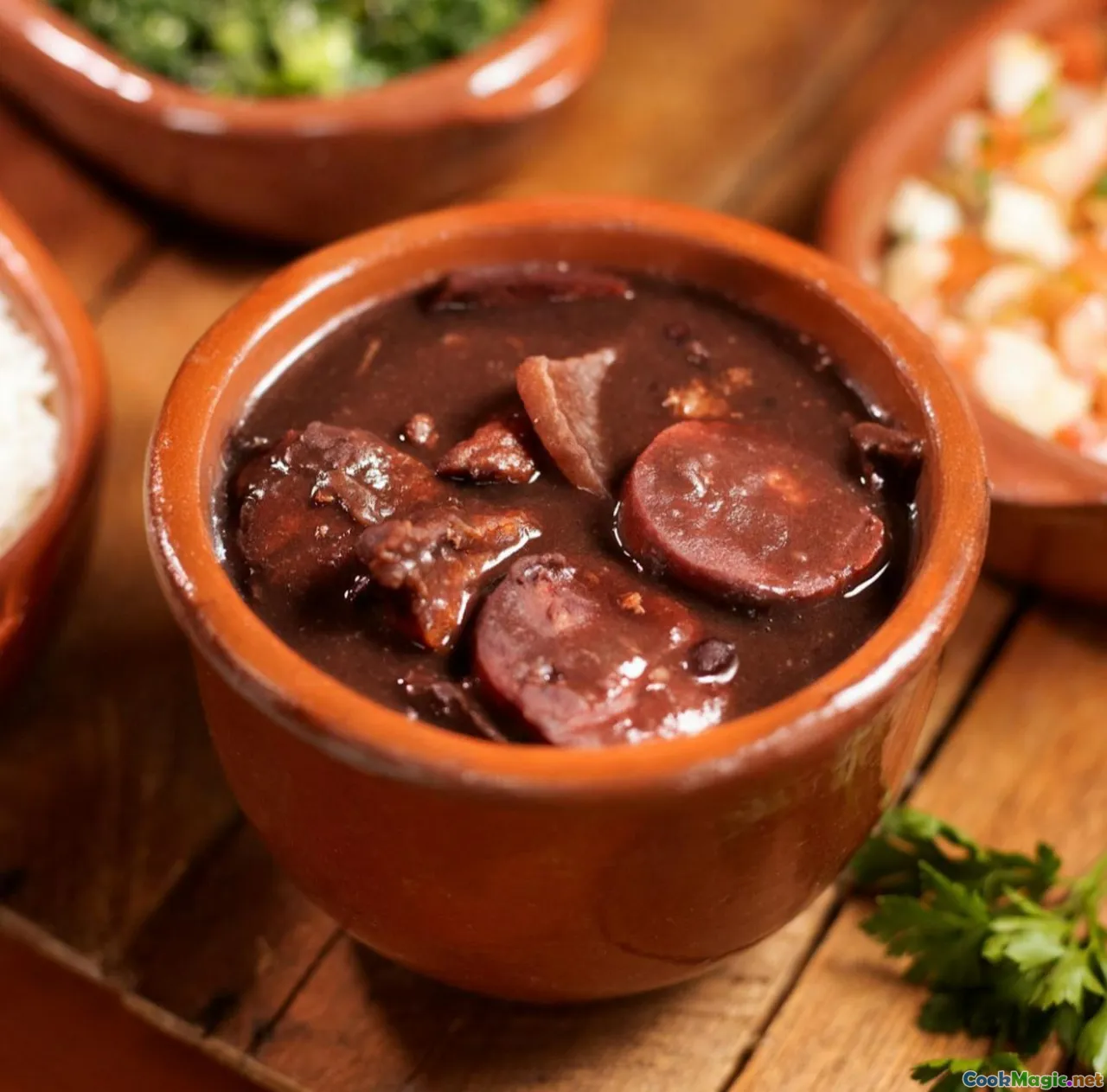Uncovering the Secrets of Brazilian Feijoada
8 min read Discover the rich history, cultural significance, and culinary secrets behind Brazil's iconic black bean stew, Feijoada. April 29, 2025 00:55
Uncovering the Secrets of Brazilian Feijoada
Imagine a bubbling pot filled with the deep aroma of black beans, smoky meats, and fragrant spices, slowly simmering as voices and laughter fill the air. This is the essence of Feijoada, Brazil’s beloved national dish—a hearty, soulful stew that embodies centuries of history, culture, and community. But beneath its comforting exterior lies a tapestry of stories, traditions, and culinary mastery that makes Feijoada more than just a meal—it's a cultural phenomenon.
The Origins and Historical Roots of Feijoada
Feijoada’s origins are as rich and complex as the dish itself. Often considered a reflection of Brazil’s diverse heritage, its roots trace back to Portuguese colonial influences, African slaves, and indigenous ingredients. The word "Feijoada" derives from "feijão," the Portuguese word for beans, highlighting the central role of black beans in the dish.
Portuguese Influence and Colonial Beginnings
During the Portuguese colonization of Brazil, resourcefulness was key. Black beans and salted pork, readily available and affordable, became the foundation of a communal stew prepared by slaves and laborers. The Portuguese brought with them techniques of slow-cooking and seasoning, which blended seamlessly with local ingredients.
African Contributions
African slaves contributed profoundly to Feijoada, especially through the use of spices, smoked meats, and cooking methods. The African influence introduced flavors like paprika, garlic, and cayenne, which added depth and heat to the dish. Additionally, parts of the pig such as ears, tails, and feet—once considered less desirable—became prized ingredients for their flavor and gelatinous texture.
Indigenous Ingredients and Flavors
Indigenous Brazilians contributed native ingredients like cassava, peppers, and herbs, enriching the stew with fresh, vibrant flavors. The combination of these influences created a dish that is both humble and complex—a true reflection of Brazil’s multicultural fabric.
The Anatomy of a Traditional Feijoada
A classic Feijoada is a symphony of textures, tastes, and aromas. While recipes can vary regionally and personally, certain core components define its identity.
The Beans
At the heart of Feijoada are black beans—small, shiny, and earthy. They are soaked overnight to soften and then cooked slowly to develop a creamy, velvety texture. The beans absorb the smoky, savory flavors from the meats and spices, creating a rich broth that coats every spoonful.
The Meats
Meat selection is the soul of Feijoada. Traditionally, a mix of salted pork cuts—pork shoulder, ribs, and sausage—are used. Chorizo, smoked sausage, and sometimes even beef jerky are added for depth. The pork parts, often with bones, release gelatin, giving the stew its characteristic thick, hearty consistency.
Aromatics and Spices
Garlic, bay leaves, onions, and black pepper form the aromatic base. Some recipes include cumin, paprika, and chili powder, adding layers of warmth and subtle heat. The slow cooking process allows these flavors to meld, creating a fragrant, inviting aroma.
The Accompaniments
Feijoada is traditionally served with a vibrant array of side dishes, including:
- White rice: Fluffy and plain, providing a neutral backdrop.
- Farofa: Toasted manioc flour with butter and seasonings, adding crunch.
- Collard greens: Sautéed and seasoned, balancing the richness.
- Orange slices: Fresh and tangy, aiding digestion and brightening flavors.
The Final Touch
A sprinkle of fresh chopped parsley or cilantro often graces the top, and a dash of hot sauce adds a personal spicy kick.
The Ritual of Cooking and Sharing
Cooking Feijoada is more than just preparing a meal; it’s a social event. Traditionally, families and communities gather around large pots, sharing stories and laughter as the stew simmers for hours—sometimes all day long.
The Slow Simmer
Patience is key. The beans and meats need gentle, prolonged cooking—often 3 to 4 hours—to unlock their full flavor potential. The aroma wafts through the neighborhood, drawing friends and neighbors for a communal feast.
Serving and Celebrating
Feijoada is often reserved for weekends or special occasions. It’s a dish that unites people, symbolizing conviviality and resilience. The act of serving steaming bowls of Feijoada, accompanied by rice, greens, and farofa, transforms a simple meal into a celebration of life and culture.
Regional Variations and Personal Touches
While the core elements remain consistent, regional and personal variations abound:
- Rio de Janeiro: Known for its lighter, more refined version, often with a focus on quality sausages.
- São Paulo: Characterized by a richer, more robust stew with a greater variety of meats.
- Bahia: Incorporates local spices and sometimes seafood.
Home cooks often add their twist—extra spices, different meats, or unique side dishes—making each Feijoada a personal signature.
Personal Reflections and Cultural Significance
Having traveled through Brazil and tasted countless versions, I am continually struck by how Feijoada is more than just food; it’s a testament to resilience, community, and ingenuity. Each spoonful carries the stories of ancestors, the warmth of shared tables, and the spirit of a nation that has transformed humble ingredients into a culinary masterpiece.
The dish embodies Brazil’s soul—its struggles, its celebrations, and its unbreakable unity. Whether enjoyed in a bustling Rio street café or a quiet family kitchen, Feijoada remains a symbol of togetherness and cultural pride.
Final Thoughts
Uncovering the secrets of Feijoada reveals a dish that is as layered as Brazil’s history itself. It’s a testament to how humble ingredients, when combined with tradition and love, can create something extraordinary. So next time you simmer a pot of black beans and smoked meats, remember—you’re not just making stew; you’re crafting a piece of Brazil’s soul.
Embrace the slow, the smoky, and the savory—your journey into Brazilian culinary heritage has just begun.









